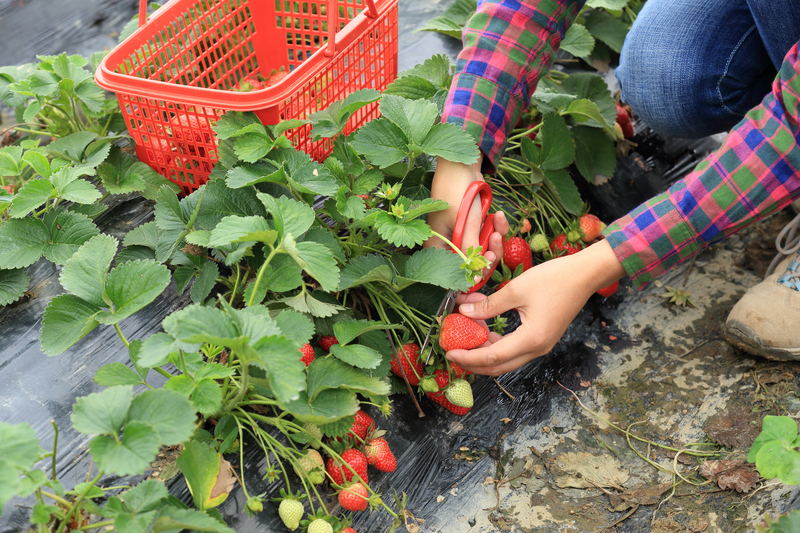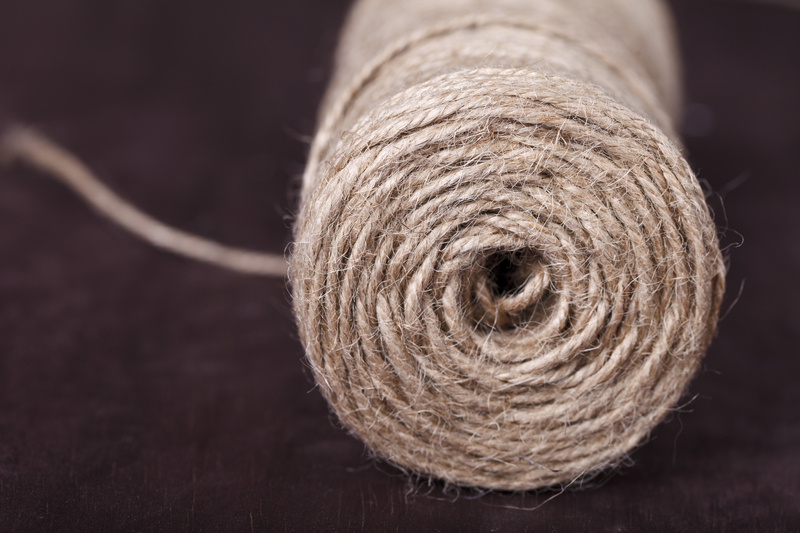How to Keep Your Lawn Thriving When Summer Drought Strikes
Is your lush green lawn turning brown and patchy as soon as the brutal summer heat arrives? Summer drought can take a toll on any garden, but with the right lawn care techniques, your yard can survive - and even thrive - despite limited rainfall and soaring temperatures. In this comprehensive guide, we'll explore how to keep your lawn thriving during summer drought, protect your grass from water stress, and ensure your outdoor oasis stays vibrant all season long.
Understanding the Challenges of Summer Drought
A summer drought is characterized by prolonged periods of high temperatures and insufficient rainfall. These conditions faster water evaporation, leaving your lawn parched and your grass under tremendous stress. The grass blades wilt, turn yellow or brown, and the soil becomes hard and compacted. Without intervention, you may face lasting damage or even the loss of your lawn.
Before you can address the drought, it's important to understand:
- The type of grass in your lawn: Some grasses are more drought-tolerant than others (e.g., Bermuda, Zoysia, Buffalo grass).
- Your soil quality: Well-draining, healthy soil helps retain moisture compared to compacted or sandy soil.
- The severity and length of the drought: The longer and hotter the drought, the more aggressive your lawn care strategy should be.

Best Practices for Watering Lawn During Summer Drought
Watering effectively is at the heart of keeping your lawn thriving when drought strikes. However, simply turning on the sprinkler system isn't enough. Water conservation is crucial, and strategic irrigation is essential to maximize every drop.
1. Water Deeply, but Less Frequently
Rather than watering a little each day, switch to a schedule that gives your lawn one or two deep soakings per week. This encourages your grass to develop deep root systems that are more drought-resistant. Aim for about 1 inch of water per session.
- Tip: Place an empty tuna can on your lawn while watering. Once it's full, you've delivered an inch of water.
2. Water Early in the Morning
Evaporation is highest during midday heat. Early morning watering (between 5 AM and 9 AM) allows water to soak into the soil and reach the roots before the sun steals it away.
3. Use the Right Sprinkler System
Opt for soaker hoses or drip irrigation for targeted, efficient watering. These systems reduce waste and ensure moisture gets where it's needed most.
4. Obey Watering Restrictions
Many municipalities issue watering rules during a drought. Follow these to avoid fines and promote sustainable water use.
Smart Mowing Techniques for Drought Conditions
Did you know how you mow your lawn can impact its drought tolerance? Follow these best mowing practices when learning how to keep your yard green during summer drought:
1. Raise Your Mower Blade
Set your mower to a higher cut (3-4 inches for most grasses). Taller grass shades the soil, reduces evaporation, and encourages deep root growth.
2. Keep Mower Blades Sharp
Dull blades tear the grass, making it more susceptible to drought stress and disease. Keep blades honed for a clean, healthy cut.
3. Leave the Clippings
Grass clippings act as a natural mulch, preserving soil moisture and returning nutrients back to your lawn.
- Avoid mowing when grass is under severe stress.
- Never remove more than one-third of the grass height at one time.
Lawn Care Tips Beyond Watering and Mowing
Surviving summer drought requires a holistic approach. These additional steps help keep your lawn thriving even in sweltering, dry weather:
1. Mulch, Mulch, Mulch
Applying a thin layer of organic mulch (such as finely chopped leaves or compost) around the edges or bare spots slows evaporation and keeps the ground cool and moist.
2. Aerate the Soil
Compact soil doesn't absorb or retain water well. Aerate your lawn in spring or early summer to create pathways for water and improve root development.
3. Fertilize Wisely
Don't over-fertilize during drought. High-nitrogen applications force tender, thirsty growth that can't be sustained. Instead, use slow-release or organic fertilizers sparingly, and apply them in the evening or right before expected rainfall.
4. Keep Off the Grass
During drought, grass is especially delicate. Limit walking or heavy activity on your lawn to avoid further damage.
5. Address Lawn Pests Promptly
Drought-weakened lawns are more vulnerable to pests and diseases. Address any infestations early with eco-friendly remedies and keep the lawn healthy to naturally resist problems.
Choose Drought-Resistant Grasses
If you're planning a new lawn or considering overseeding, select grasses that thrive during drought and heat. Some varieties stay green with less water, making them the best choice for dry, hot summers.
- Bermuda Grass: Excellent drought and heat tolerance, thrives in sun.
- Zoysia Grass: Deep-rooted and naturally drought-resistant.
- Buffalo Grass: Uses far less water and thrives in hot climates.
- Tall Fescue: Among cool-season varieties, it has the deepest roots and best drought performance.
- Fine Fescues: Includes hard, creeping red, chewings, and sheep fescue - adapt well to low water.
Tip: Overseed with drought-resistant mixes in fall or spring to improve your lawn's resilience for future summers.
Recognizing Signs of Drought Stress in Grass
Understanding what drought stress looks like helps you intervene before it's too late. Keep an eye out for:
- Grass color changes: Blue-green, yellowing, or browning blades indicate severe water stress.
- Footprints or mower tracks linger: Grass that doesn't spring back after being walked or mowed is too dry.
- Soil is hard and cracked: Water is not reaching the root zone, and the grass can't access moisture.
When you spot these signs, prioritize deep watering (within restrictions), raise your mowing height further, and minimize lawn use until conditions improve.
Lawn Alternatives and Water-Saving Landscaping Ideas
Sometimes keeping a traditional turf lawn thriving during drought is not practical, depending on your region and water availability. In these cases, consider:
- Reducing lawn size: Replace parts of your yard with drought-tolerant ground covers, stone, or mulch beds.
- Planting native or xeriscape plants: These thrive with little water and often provide more biodiversity and habitat value.
- Using artificial turf: While not for everyone, modern artificial lawns require zero water and always look green.
Did you know?
Creating rain gardens or installing rain barrels gives you a sustainable water source for your garden during dry spells.

Common Lawn Care Mistakes During Drought
Avoid these errors to ensure you protect your grass during drought:
- Watering at the wrong time of day (midday or evening)
- Mowing too short ("scalping" your lawn)
- Over-fertilizing or fertilizing during peak heat
- Ignoring weeds and pests that compete for precious moisture
- Letting the soil become compacted
Key Takeaways: How to Keep Your Lawn Thriving When Summer Drought Strikes
- Water deep and infrequently, early in the morning, and use efficient irrigation methods.
- Raise your mowing height to shade roots and preserve moisture.
- Mulch and aerate to reduce evaporation and improve water penetration.
- Limit fertilizer and traffic during drought periods.
- Choose drought-resistant grasses and reconsider lawn size and composition if droughts are frequent in your region.
With smart water management, proper mowing, and resilient lawn choices, your yard can stay beautiful, even when a heatwave is in full swing.
Frequently Asked Questions
- Q: Should I stop mowing my lawn during a drought?
A: Don't stop altogether, but reduce frequency and raise the blade. Only mow when needed and avoid mowing stressed areas. - Q: Can brown grass recover after drought?
A: Most grasses enter dormancy, not death, during drought. With rain and care, many will recover. However, severe or prolonged drought can kill sections that may need overseeding. - Q: How can I save water and keep my grass green?
A: Choose drought-tolerant varieties, mulch, water deeply but rarely, and eliminate unnecessary lawn areas.
Conclusion
Maintaining a thriving lawn during summer drought is possible with a few smart strategies and a little planning. Focus on soil health, efficient watering, choosing the right grass, and sustainable landscaping to enjoy a resilient green oasis all season. Remember - every drop counts, and your lawn will reward careful stewardship with stunning beauty, even when rain is in short supply.
Start using these expert drought lawn care tips today and see the difference in your backyard sanctuary!